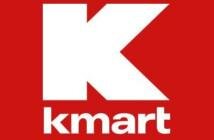Market research firm Euromonitor has named its “Top 10 Consumer Trends” for the year ahead, which indicate that the marketplace will become a more challenging and complex territory.
The trends are, as characterized by Euromonitor:
Ageing: A changing narrative. What it means to be older is morphing in lifestyle and consumption terms, creating what some refer to as a “Longevity Economy” that abets health and beauty products, fashionable options that balance a desire to remain in touch with youth but suitable for later life, and a continuing interest in tech developments.
Consumers in training. Today’s consumers are trying to determine an appropriate work/life balance across generations, with the result that they launch kids into consumption at an earlier stage but also fix them in the same households into their 20s and sometimes beyond, making youngsters a greater purchasing influence even to the extent of parents seeking the advice of their children when, for example, tech and fashion shopping.
Extraordinary. Consumers with particular demands are finding it easier to satisfy them rather than settling for mass-market items that almost but don’t quite fit their preferences, with the result that shoppers expect to find “extraordinary” items tailored to their preferences, making everything from plus-sized products to more design choice in furniture increasingly important in sales conversions.
Faster shopping. Consumers have become impatient, demanding immediate gratification, expecting constant availability of services, and insisting on real-time virtual dialogue, which has prompted more companies to develop quicker models that may include one-hour delivery, for example, and/or beacons that broadcasts messages to nearby consumers via their smartphones.
Get real. The allure of authenticity. An influential buzz and selling word today, authenticity is a consideration that consumers use in self-curating as they shop to the extent that positioning a product as being somehow “genuine” can be critical to purchase consideration, even if, in reality, that staging is contrived.
Identity in flux. The nature of self-identification has become more fluid for many consumers— who wrestle with, the tension between global and local, in one example— affecting trends and individual purchases, which means vendors and retailers have to cope with diversity as not only a more important consideration but also a more elastic issue, forcing them to rethink who their audiences really are and how various factions interact with each other.
Personalize it. Consumer marketplace expectations have changed as data mining and increasingly nimble industrial capacities have provided shoppers with products that line up more closely with their exact preferences; as a consequence, shopper demand for customization and even personalization will only increase.
Post-purchase. Practices adopted, many to make e-commerce easier on the shopper, have raised customer service expectations such that willingness to address post-purchase queries and complaints influences whether a consumer recommends or criticizes a company, which affects not only repeat purchasing but customer acquisition.
Privacy and security. In a world troubled by a sense of insecurity, consumers are anxious to stay safe and well, so product and practices that make them feel more in control of their destinies will have a distinct advantage in the marketplace.
Wellness as status symbol. Healthy living, today, conveys a certain status advantage in society as more consumers opt to flaunt their passion for wellness rather than possessions, so belongings as an indicator of wealth have come less important while trimming the fat, in physical, spiritual and material terms, has become a greater priority.

